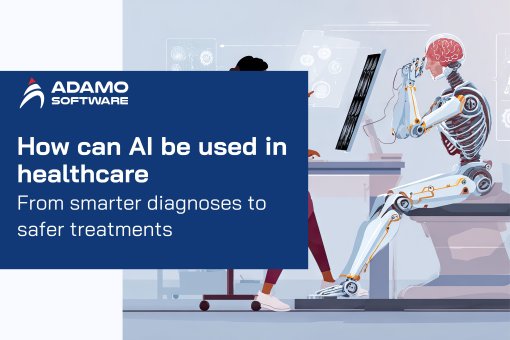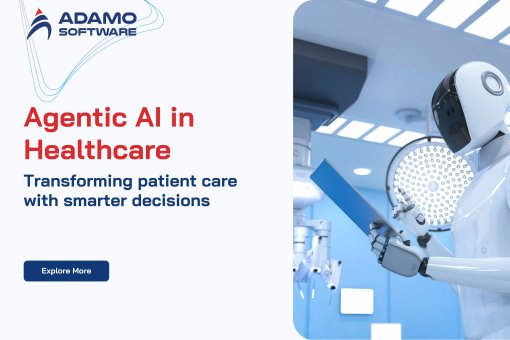Digital Transformation in Healthcare – Staying Ahead of the Curve
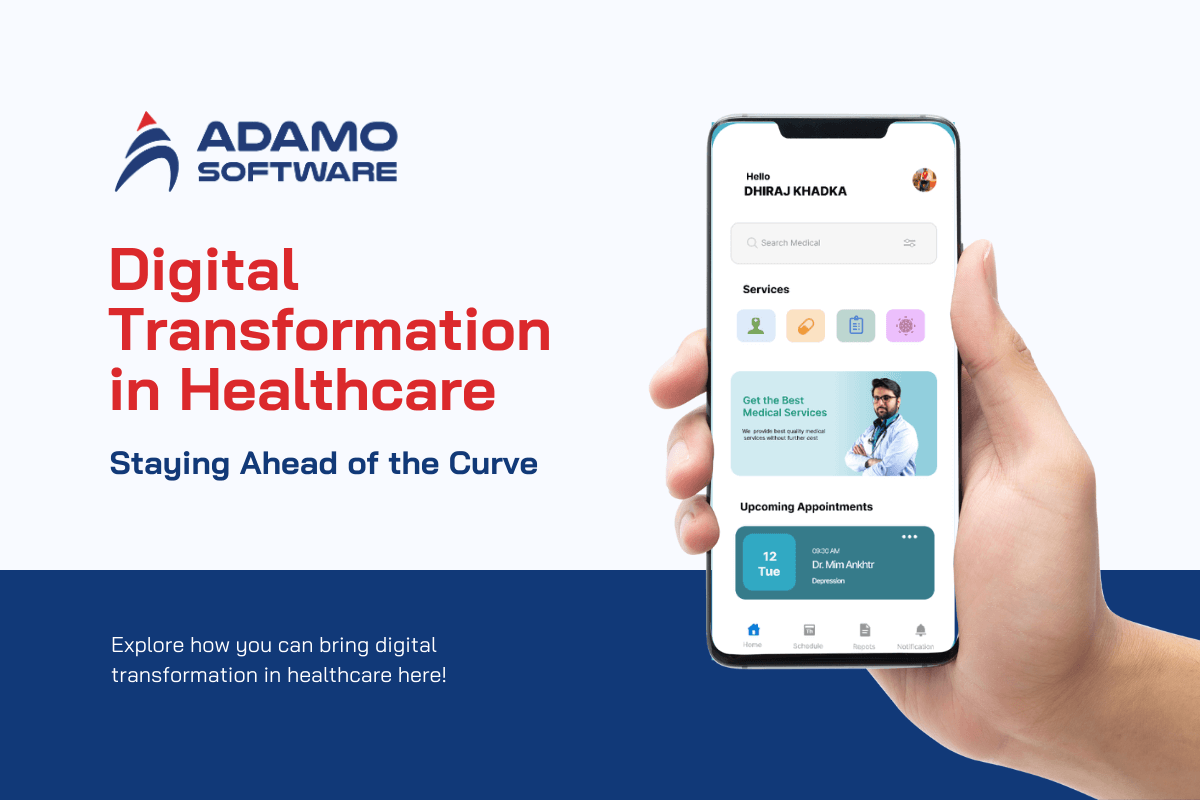
Technological advancements in recent years have created major shifts in all industries, including the healthcare sector. This digital transformation in healthcare is changing how medical services are delivered and received. Without doubt, getting to know the latest digital solutions for healthcare is the single most important step for medical facilities to stay ahead of the curve.
In this blog, we’ll help you form a fundamental understanding of digital transformation in healthcare, its pros and cons, and which digitalization options are available for your medical center. Let’s dive in!
I. What Is Digital Transformation in Healthcare?
In the healthcare sector, digital transformation is the use of digital solutions to improve the delivery of medical services, as well as enhance and accelerate medical research. This includes using the internet, digital tools, and new therapies to create better health management practices.
Digital transformation in healthcare helps improve patient well-being and reduce costs thanks to better data analysis. It also creates positive impacts on medical education with new training methods. This ongoing process creates many opportunities, but at the same time requires huge investments to build proper infrastructure.
Digital health benefits patients by giving them more control over their healthcare decisions. They can use online resources and digital applications to make informed choices. Patients will be more and more proactive with their healthcare, and as a result, the healthcare industry must be prepared to change and adapt to their changing needs and expectations of a more personalized and speedy service.
It is evident that digital transformation in healthcare brings positive influence on not only patients but also medical staff. Digitized healthcare systems help increase employee productivity, enhance operational efficiency, and reduce significant operating costs.
The road to any changes will definitely have obstacles. Despite these challenges, digital transformation in healthcare is spreading faster than ever. It is essential to be well aware of both its benefits and challenges to develop a suitable roadmap to digital transformation in healthcare for your own medical facility.
II. Digital Healthcare Trends and Statistics
You might be wondering how big this digitalization trend is in the healthcare sector, let’s find out by looking at some of these remarkable numbers! In 2022, the global digital healthcare industry was estimated at over $330 billion. Statista further predicts that it will reach $650 billion by 2025. This growth is fueled by technologies like mobile health and wireless technology. This emerging sector is also attracting many investors, with funding jumping from $1.1 billion in 2010 to nearly $22 billion in 2020, the majority of which is for medical startups. The US is currently the pioneer in incorporating digital transformation in healthcare, with San Francisco, New York City, and Los Angeles as major hubs for this digital health revolution.
The way we access and deliver healthcare is changing rapidly thanks to this technology-driven healthcare landscape. This digital transformation in healthcare is empowering both patients and providers with a range of innovative solutions.
People can now book appointments conveniently, using telemedicine services, and tracking their health through apps, all from the comfort of their homes. For medical centers, these technologies are streamlining workflows, improving healthcare coordination and delivery, and reducing costs.
Let’s take a quick look at some key trends shaping digital transformation in healthcare in 2024:

1 – Telemedicine: The COVID-19 pandemic has made telemedicine become more widely used, turning remote medical care into a reality for many people all over the world. This trend is expected to become a global standard for hospitals and clinics.
2 – Artificial intelligence: AI is playing an increasingly important role in healthcare, assisting with forecasting disease outbreaks and drug discovery. It is also very potential in creating a more functional database of AI-based medical technologies.
3 – Self-monitoring: Digital transformation in healthcare is fostering self-monitoring with devices and sensors like smartwatches and pulse oximeters. These tools allow patients to track their health vitals and symptoms and manage their health better.
4 – Cloud-based patient records: It’s 2024 and paper records are gradually becoming a thing of the past. Nowadays, with cloud-based technology, healthcare processes are significantly improved, with medical records being securely stored and accessible. This allows more patient engagement and personalized care.
5 – IoMT and medicine: The Internet of Things (IoT), or Internet of Medical Things (IoMT) in the healthcare context, is becoming a big part of the digital transformation in healthcare. Wearable devices, integrated applications, and monitors are now commonly used tools for personalized care.
6 – Virtual and augmented reality: VR and AR are bringing new possibilities in healthcare. VR is making surgical training and planning easier, and at the same time supporting mental health and chronic pain management.
7 – Age tech: This is an emerging field that focuses on bridging the gap between healthcare technology and the elderly. Age tech offers solutions to improve monitoring, increase connectivity, and allow older people to get access to healthcare services with ease and address their individual healthcare needs.
8 – Digital health apps: The market for digital healthcare apps is expanding significantly. There are now a wide variety of apps with different focuses for specific diseases and health conditions. These apps let patients get information easily, but there is still room for further development in order to achieve better data integration.
These trends are undoubtedly transforming the healthcare sector for the better. As these trends continue to evolve and be adopted more, even better innovative solutions are promised to be come up with, improving the quality of healthcare for everyone.
You can explore more about Digital health platform development: A comprehensive guide here.
III. Advantages of Digital Transformation in Healthcare
1. Patient care personalization
One of the primary goals for healthcare professionals is to constantly improve the quality of medical services. This requires personalization of diagnosis and treatment plan for each patient depending on your specific needs and past medical record. However, when the medical workforce is often put at the risk of being overworked, especially in times of medical emergency or global pandemic, this would be very hard to achieve with manpower alone.
Digital transformation in healthcare will be the key factor in making this happen. Technologies like electronic health records help doctors to develop personalized treatment plans by utilizing each patient’s data such as medical history and genetic profiles. Thanks to this data, healthcare professionals can personalize care plans, predict potential health risks and intervene early to avoid later consequences.
Although simply using electronic health records doesn’t mean you’re fully on digital transformation, learning to use these tools to create a more personalized approach to care will be helpful in allowing you to deliver your healthcare services more efficiently.
2. Increase equity and accessibility in healthcare
These days, the world is all about equity. People are fighting for equity in all aspects of our lives, including access to quality healthcare. The sad news is that disparities still exist despite many efforts made over the years. Data from the Kaiser Family Foundation shows that in 2021, Black, Hispanic, and Asian adults in the US were less likely to receive mental health services compared to White counterparts.
Digital transformation in healthcare offers a potential solution to bridge this gap. Telemedicine – a key component of digital transformation – allows patients to have their health monitored without the need to travel to medical centers.
In this way, traditionally underserved populations, including those in remote areas and elderly individuals, will get access to essential health services.
3. Boost productivity
As we’ve mentioned above, efficient healthcare delivery is very important for medical centers. It guarantees timely care for patients and enables clinicians to see more individuals. However, this would be a challenge as the world population is aging, more people are in need of medical care, while there is a shortage of medical workers.
Luckily, with the help of digital transformation in healthcare, especially AI-powered automation, the productivity of the healthcare system will be significantly improved. This is made happen by:
- Streamlining appointment scheduling
- Simplifying adherence to healthcare regulations
- Coordinating work schedules for caregivers and staff
- Maintaining accurate patient medical records
- Automating note-taking and administrative processes
But remember, digital transformation in healthcare is not only about these administrative tasks. Doctors will also be able to save a lot of time thanks to these technologies.
For instance, doctors can use transcription technology to keep their notes electronically, saving up time for other important tasks. Additionally, artificial intelligence allows them to predict potential health issues more efficiently. With this information, doctors can effectively slow down the progression of chronic diseases and ultimately improve patient health outcomes.
4. Cost reduction
Huge medical costs are still among the reasons why many people cannot get access to quality healthcare in time. High costs put pressure not only on patients, but also on medical facilities. According to the Peterson Foundation, the U.S. spends $4.5 trillion on healthcare annually, which means an average of $13,493 per person in 2022.
Digital transformation in healthcare offers a potential solution by implementing value-based care models. This approach prioritizes quality care, medical staff’s performance, and overall patient experience. It aligns with the healthcare industry’s core objectives: improved patient outcomes while keeping the costs low.
Data collection and analysis are the key factors in value-based care, brought about by advancements in healthcare administration. For example, the rise of community health clinics – a product of digital transformation efforts – allows patients to receive timely medical care. What’s more, this is often at a much lower cost compared to emergency room visits. This ensures patients access essential healthcare services when they need them the most, avoiding unnecessary and expensive spendings at the emergency department.
IV. Digital Solutions for Healthcare Use Case
Now that you are clear on the many benefits of digital transformation in healthcare, let’s have a look at some of practical digital solutions and how you can use them at your clinics:
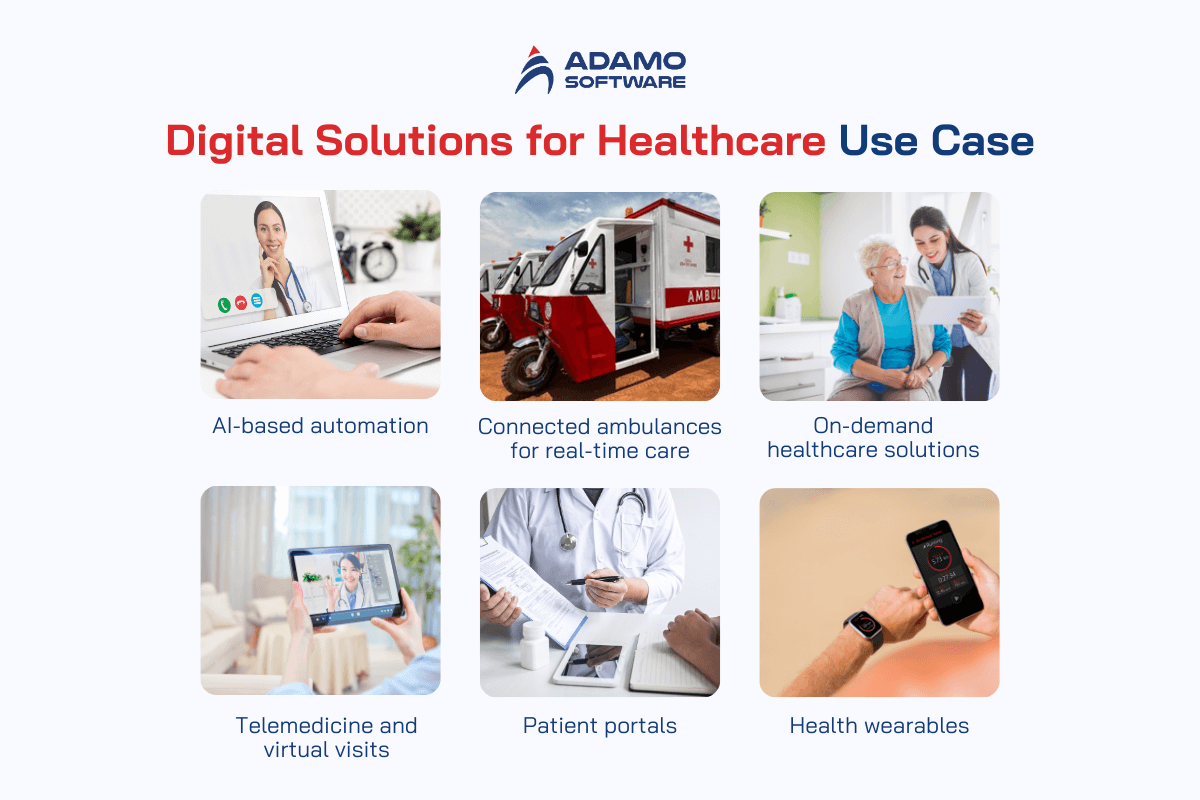
1. AI-based automation
Automation is one of the key aspects of digital transformation in healthcare, and this is made easier with the emergence of artificial intelligence tools. These tools help streamline workflows for hospitals, allowing them to operate more efficiently with limited available resources. Patients can also benefit from this automation with improved care quality and shorter hospital stays.
2. Connected ambulances for real-time care
Have you ever wondered what it would be like if an ambulance acted as an extension of the hospital? Let us introduce the idea of connected ambulances, which gather and transmit a patient’s vital signs via wearables, sensors, and HD cameras directly to the hospital. This allows doctors to prepare for a patient’s arrival, optimizing their time and efforts for each patient. Digital transformation in healthcare empowers connected ambulances to deliver real-time care and stay connected to the hospital.
3. On-demand healthcare solutions
On-demand services are among the digital solutions that are rapidly changing the healthcare landscape. They allow patients to schedule appointments, receive consultations, and even obtain medication electronically, all with just a few taps away. This helps reduce the struggles with paperwork, provides instant access to care, and fosters effective patient interactions.
4. Telemedicine and virtual visits
The rise of virtual medical visits is another major trend in digital transformation in healthcare. Telemedicine now allows patients to connect with healthcare providers through phone or video calls, providing them with a much more convenient and comfortable alternative to traditional in-person appointments. This technology has very potential in helping medical staff to control infectious diseases, provide better assessments, manage chronic conditions, and offer primary care services remotely.
5. Patient portals
Patient portals are next on the list of digital solutions that create digital transformation in healthcare. These portals make it easy to access health records, electronic prescriptions, and online appointment scheduling. They also foster communication between patients and healthcare providers, allowing patients to see test results, ask questions, or even go as far as managing their insurance information!
6. Health wearables
Wearables are another exciting example of digital solutions in healthcare. These devices collect information like health and exercise data and are able to send it to doctors in real-time. This is so cool in that it allows patients to take a proactive approach to their health by tracking various health parameters and receiving reliable data. These little devices also contribute to reduced healthcare costs, increased patient engagement, and reduced workloads for medical staff.
V. Challenges of Digital Transformation in Healthcare
As we’ve mentioned earlier, there are a number of challenges that you will have to encounter on your road to digital transformation in healthcare. Having a clear understanding of what they are will help you and your medical team develop effective plans to deal with these obstacles and successfully utilize technologies in your delivery of healthcare services. Now let’s look at some of the challenges and what you can do to cope with each of them.
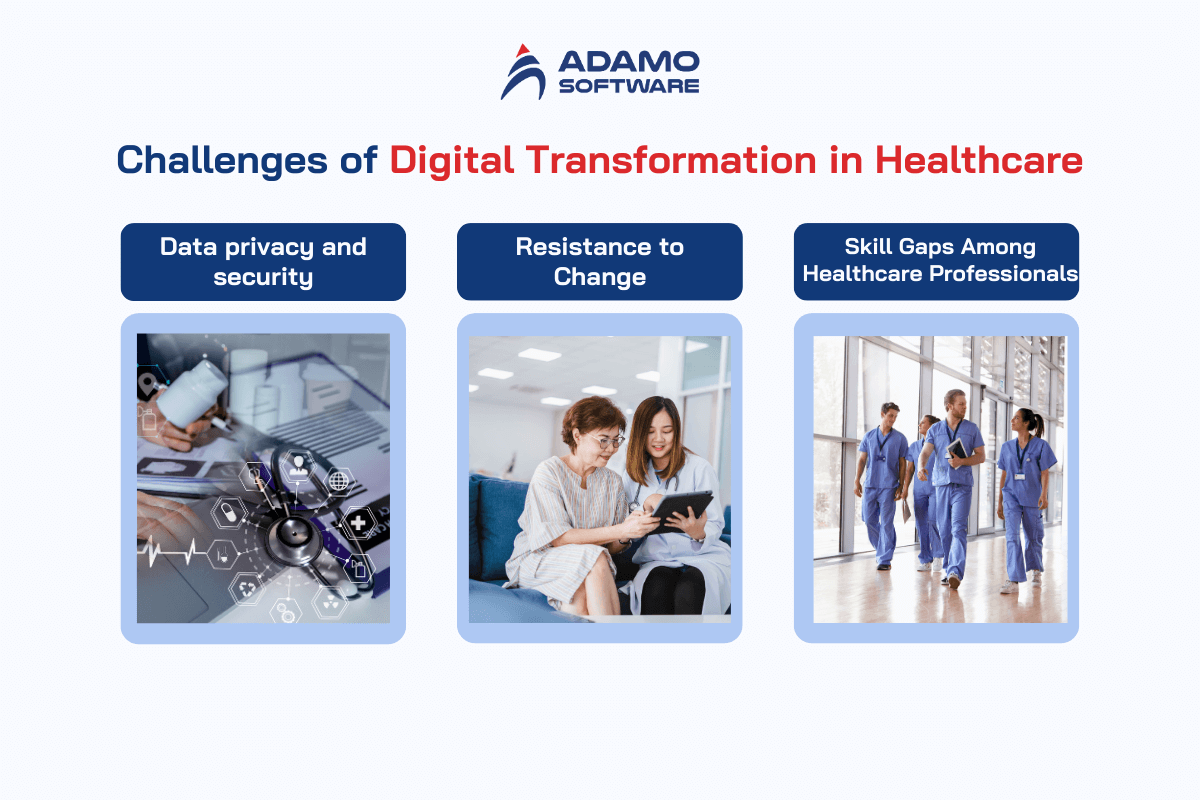
1. Data privacy and security
The first and most serious problem you need to be aware of when aiming for digital transformation in healthcare is data privacy and security.
In the past, issues related to data sharing have restricted hospitals’ ability to access healthcare data in time to get information that helps optimize patient care and health outcomes. New tech like cloud-based data storing is now being used to reduce this burden, reducing redundancy, streamlining processes, and ultimately cutting costs.
However, one critical problem associated with this digital form of storing data is privacy. When information is being shared between patients, providers, and specialists in a digital environment, it means that hackers can get their hands on that data too. The HIPAA Journal reports that between 2009 and 2022, healthcare data breaches exposed over 350 million patient records.
Therefore, healthcare facilities need to have strict cybersecurity measures to avoid this risk from happening. This must be achieved while conforming to data protection regulations and meeting patient expectations for easy access to their medical records. Maintaining this balance is crucial for successful digital transformation in healthcare.
2. Resistance to Change
Changing is never easy, neither is having some whole new technologies at your workplace that you’ve probably never even heard of. Your staff and patients need some time, or even a lot of time, to get used to digital transformation in healthcare. And this can be very frustrating, especially for those who are slow in learning technologies like the elderly.
In order to successfully transition to a more digitized healthcare system, you need to provide clear guidance to these technologies, making sure that all of your staff – whether they’re medical doctors or administrative staff – understand how to leverage these tools and work together effectively. Also, introduce these techs to your customers and develop plans to help them gradually transition from traditional methods to new ones.
It takes the collaboration of everyone involved in your healthcare system for this digital transformation to be really successful.
3. Skill Gaps Among Healthcare Professionals
The last obstacle of digital transformation of healthcare that you need to know about is a double challenge between labor shortages and a significant skills gap among both new and seasoned professionals.
To bridge this gap and ensure a successful digital transformation in healthcare, hospitals need to offer medical staff professional development opportunities and training programs. Here are some of the skill sets required for healthcare professionals to thrive in these new digital environments:
- Project management
- Agile methodology
- Fundamentals of computer science
- Automation technologies
- Change management strategies
- Deep Understanding of the Healthcare Industry
- Marketing and communication skills
- Business process optimization
- Data analysis capabilities
By equipping their workforce with these essential skills, healthcare facilities can ensure their teams can embrace new technologies well in this digital age.
VI. Staying Ahead of the Curve with Adamo Healthcare Software Development Service

If you’re planning on starting your journey of digital transformation in healthcare, Adamo Software is here to help! We offer a wide range of digital healthcare solutions such as telemedicine, remote patient monitoring, wearables, and other on-demand healthcare solutions. Our experienced team of IT experts will help you level up your delivery of healthcare services and stay right ahead of the curve in this digital world.
Contact us today to turn your big ambition into reality!









